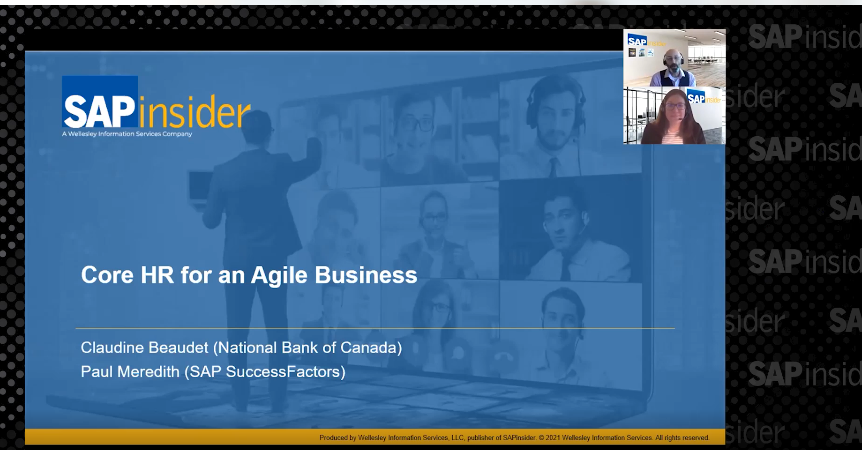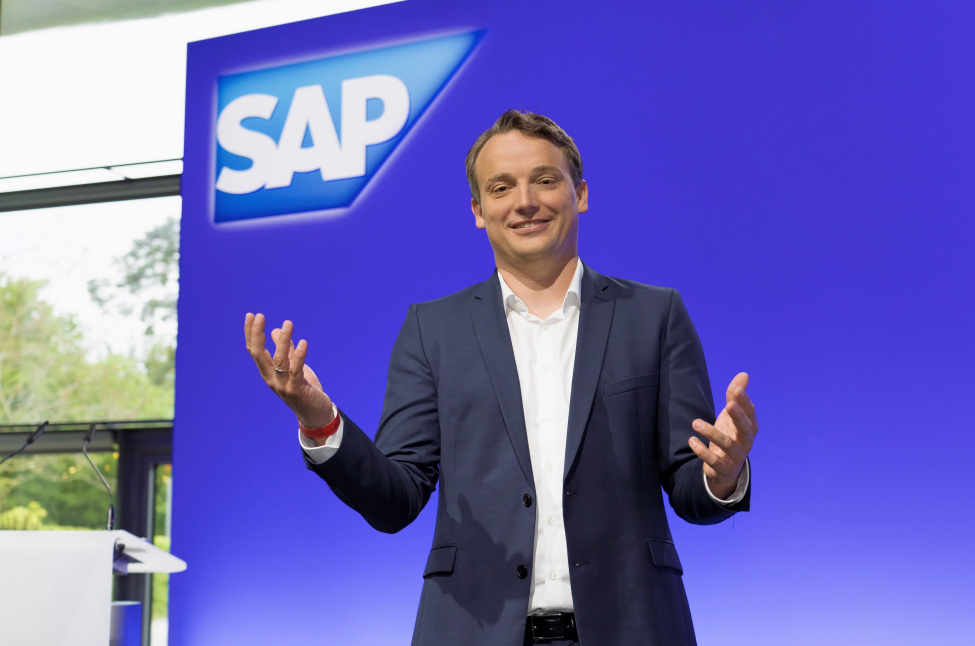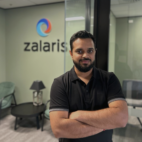Live from SAPinsider Studio: HR as a Leader in the Digital World
Yvette Cameron and Mark Brandau of SAP SuccessFactors Discuss the Role of HR for Digital Winners
Yvette Cameron and Mark Brandau of SAP SuccessFactors , keynote presenters at the SAPinsider HR 2017 event, join SAPinsider’s Ken Murphy after the keynote presentation to discuss the evolving role of HR in a digital enterprise. Below is a lightly edited transcript of the discussion.
Ken Murphy, SAPinsider: Hi this is Ken Murphy with SAPinsider, and I’m at the SAPinsider HR 2017 event here in Orlando, Florida. This afternoon I am pleased to be joined by Mark Brandau, SAP SuccessFactors Vice President, Solution Management, and Yvette Cameron, SAP SuccessFactors Vice President, Strategy. Thank you both for joining me today.
Yvette Cameron, SAP SuccessFactors: Thanks for having us.
Explore related questions
Mark Brandau, SAP SuccessFactors: Thank you.
Ken: You both were co-presenters here at the (keynote) event about an hour ago, chock filled with information and educational material; one of the things you really started off with was discussing how the world is changing and how HR really needs to be changing along with it in the context of digitization. Can you explain to the viewers what you mean by that?
Yvette: Absolutely. So there is tremendous change going on the in world today driven by digital business, and it’s imperative for HR to step up and take a leadership role. Too many organizations are falling behind the competitive curve relative to innovation, retention, engagement, and simply aren’t keeping pace with those various changes. HR is the department that has the ability to see into the workforce, to put in place new approaches for innovation and enablement and engagement, and again this is something that is not on the horizon; it’s here today and HR needs to take a leadership role.
Ken: You talked about what it means to be a digital winner in this context, and the example you used was recruiting when you talked about going from transactional to transformational. How do companies do that and why is it important to make that step?
Yvette: I gave three examples, and one of them was in the area of recruiting. And the fundamental shift here is moving from a thought process of automating transactions to leveraging a transformational process, re-thinking business processes so that you are leveraging the information and the synergies that are possible when you re-think what’s possible. When you think about what am I doing, why am I doing it, how am I doing it, all of that is now on the table and you can re-think and add and create a lot of value in your organization by re-thinking these processes. So recruiting in particular has moved from ATS – applicant tracking systems – very systematic, check the box, recruiter-focused, to a very holistic approach that is focused on the candidate experience, it’s focused on the relationship development of the candidate and their post-hire experience being consistent. And ultimately using data to predict the success of those candidates before they even come into the organization. We’ve completely transformed the process; technology alone doesn’t do it you need to transform the ways you think about and engage with candidates as well.
Mark: To add to that, one of our customers Bertelsmann, a large publishing and media holding company out of London, and they’ve taken that transformation in recruiting specifically and they’ve gone from management aspects more into holistic marketing and even intelligent posting capabilities which is very cool, and it’s helping them transform and re-think, as Yvette said, in a holistic way what they’re doing with recruiting. And I guess the other piece I’ll add to that is that it doesn’t stop with just posting to a job board and the candidate experience and what that looks like and then hiring. That goes into onboarding. And I can tell you that’s one of our fastest growing solution areas is onboarding. And it’s so important as part of what a lot of companies are going through with transformation these days and re-thinking how they’re approaching onboarding as part of talent acquisition.
Ken: By doing this and making that transformation, on the back-end your retention might be higher, more satisfied employees so it’s not just doing it for the sake of doing something different, but prove beneficial?
Mark: It’s a huge area because that’s very measurable. Your retention rate after 90 or 100 days, and speed to productivity, and effectiveness from a new hire – those are all key things. Onboarding is no longer just about checking the boxes and transactions and forms; onboarding is about engagement and making sure that new employees are up-to-speed and engaged and all-in from Day One.
Ken: Another thing you brought up at the keynote was about closing the leadership gap and why that’s so important to today. Can you tell the viewers a little more about what that means?
Mark: There’s a window – and you mentioned this in the keynote – the window is that there is a gap right now for HR and the gap says, ‘Look, things like data is really not being used.’ HR leaders are not embracing data and leveraging that to help transform; things are still driven by gut instinct. I’m referring to this window, this window is closing and time is running out because in another year the HR practice and profession is going to evolve again and if we’re not embracing data to make decisions and move forward HR practitioners and leaders are going to be left behind.
Yvette: The gap is actually comprised of several areas of deficiency. Mark spoke to one, but we also think that leaders, digital winners if you would, are focused on bringing digital technologies into the organization. They’re focused on fostering digital literacy amongst the workforce, they’re removing the complexity and the friction in organizational structures to foster greater empowerment and collaboration and connection amongst the workforce, all in an effort to support the goals and strategies of the organization. This leadership gap is the difference between those characteristics of digital winners and the other 84% of responding organizations that just aren’t there yet. And again, because of its role HR and HRIT have a unique opportunity to step up, take that leadership role and work on closing that gap.
Ken: Turning more specifically to SuccessFactors applications, you said there are three prerequisites for every SuccessFactors application: being engaging, intelligent, and connected. Can you address why that is so important, and especially with one of the reasons you mentioned is that (those) help foster diversity and inclusion. Why is that important in that context as well?
Mark: Yes, those three prerequisites are incredibly important because the business challenges that organizations face these days are getting more difficult, harder, and more challenging. The days of gut instinct and employees that don’t care, and HR in a silo are gone. I think the reality is when you’re talking about diversity and inclusion that it’s an example of a business challenge that is really tough; how do you solve diversity and inclusion and have a business beyond bias? You have to start thinking about leveraging those things (such as) a more connected and engaged workforce, more data and intelligence to take out some of the bias as much as possible in an automated way, and things that are more connected to start solving those challenges.
Yvette: We talk about business beyond bias not because it’s the cool, hip thing to talk about. We talk about it because there is a real problem that organizations face today and that is a lack of talent. We really speculate, is the lack of talent that severe, or is it just a matter that we’re not fishing in a big enough pond and haven’t cast a wide enough net. Quite honestly, because of inherent biases, unconscious biases, we are ruling people out of the talent pool. We’re making it artificially small because this person doesn’t fit our picture or our mental image of who would be successful in this role. One example I like to speak to is the case of those on the autism spectrum disorder who oftentimes have a hard time making eye contact and yet their skill and talent are tremendous. If your recruiting processes and the forms and technologies you put in front of those applicants will end up screening them out because they don’t make eye contact. Then you’ve just missed out on probably some of the most creative talent in your applicant pool. We’re casting a net that’s not wide enough and we’re filtering too many people out. That’s why we’re talking about this.
Ken: Lastly, I’d like to bring up three different, newer initiatives or solutions that you discussed at the presentation. The first being workforce analytics and analytics with SAP BusinessObjects and the SAP Digital Boardroom. Why is that important; is that in the context of giving HR a seat at the boardroom?
Yvette: The HR organization has struggled for 10-20 years to get intelligent insights, to get analytics that they can properly understand and communicate across different individuals across the organization. With our integration with the Digital Boardroom and BusinessObjects, we’re able to bring workforce data into the broader context of a business decision so that at a glance we have the many different constituent business leaders across the board able to look at what is the impact of people, product, customers on our business? Suddenly HR not only has a seat at the table, they’re standing at the table and that makes a huge difference.
Ken: The second one was SuccessFactors Insights. Is that an evolution of Employee Self-Service?
Mark: It’s the notion of making data consumable and easy and friendly and available to everyone. So there are key metrics in performance indicators and things like that that have to be there, and they have to be in context wherever you are on any page of our suite and it shouldn’t be any more than a single click away to say, ‘OK, where am I, give me some guidance, direction, and recommendations’ and that’s what that provides. And it’s critically important that it’s easy, one click, contextual and relevant to every page you happen to be on, and it’s immediate and relevant for the practitioner or the HR business partner to use it.
Yvette: The survey we did with Oxford Economics showed that only 15% of organizations – and we surveyed over 4,000 – said that they’re able to make easy, fast decisions and 55% said that they used data to make decisions. I don’t know what the other 45% are using. Insights will address both of those issues, bring data to every single individual, make it available within one click and how can you get much faster than that?
Ken: And then lastly the learning marketplace with SAP Hybris and just bringing learning to outside the business. It sounds like a novel approach or idea. Explain what that means.
Mark: It’s sort of fascinating in the sense that some organizations do it really well and they’ve put together some things, but the majority of organizations haven’t done much with this or it’s been really complicated and cobbled-together approaches. Our approach on this was to simplify it to provide a turnkey solution that incorporates the best of Hybris, like e-commerce and fraud detection and multiple payment engines and all kinds of things with the best learning management system so training when providing it to customers’ customers and partners and supply chains and things like that, it helps with things like customer retention, attracting them, building an alumni network and making sure skills are up-leveled once someone is outside the organization, plus the selling aspects which are hard dollars. That’s not a soft metric, that’s not a soft ROI, that’s a hard dollar. You can charge for training so that actually helps the business with hard growth and revenue.
Yvette: It’s a great way for HR to reignite their business; many times learning is owned by the Chief Learning Officer or organizational development and not really necessarily under the HR line of business. And not that this solution will change those org models but what’s interesting is an opportunity for HR to get closer to if not owning that solution, and understand who’s using it and discuss if there are ways to expand the training. I’ve seen it in use in volunteer organizations, and ultimately really it’s a way to increase the brand, and the value of the brand.
Mark: We talk about whether it’s the CLO or HR, the thing that’s interesting – as you said it, standing at the table – this enables whether it’s in the CLO organization or HR to stand with the head of sales and marketing and say, ‘I can help you generate revenue for the business.’ A direct discussion. No bobbing, no weaving, it’s a direct discussion.
Yvette: When has HR even been able to say that? This is really exciting.
Ken: Standing at the table.
Yvette: Standing at the table.
Ken:Well Mark and Yvette I appreciate your being with me today and I hope you enjoy the rest of the conference.
Yvette: Thank you very much.
Mark: Thank you, our pleasure.








